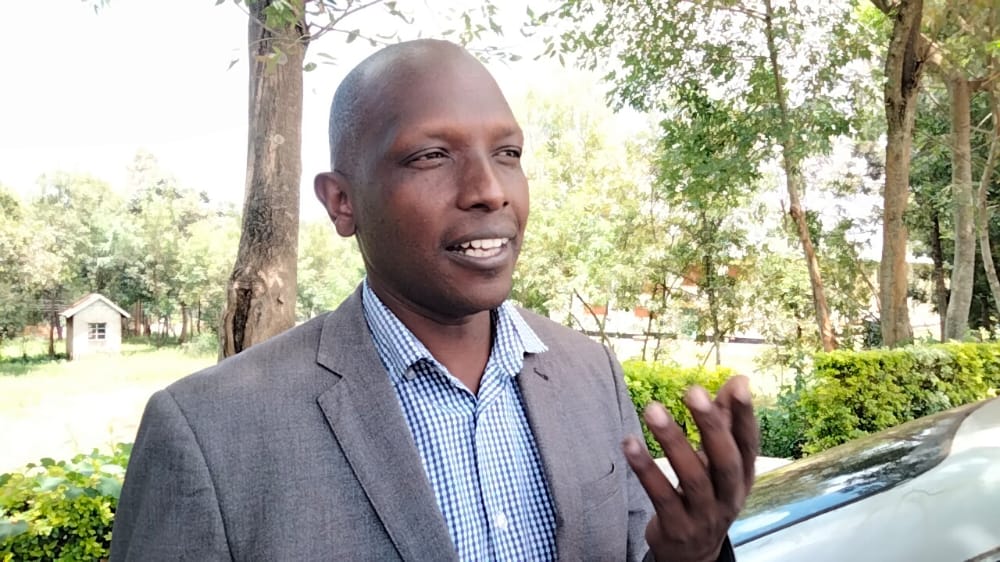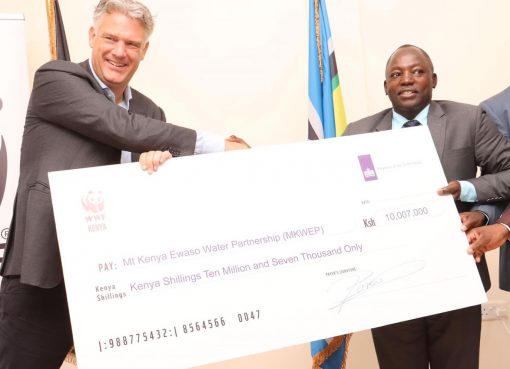As the world marked White Cane Safety Day last Friday, a section of Kenyan medics celebrated remarkable achievements in provision of eye care services, which have positioned in the global limelight.
According to statistics, a decade ago, the country had just a handful of specialists working in the eye sector, which made most eye patients to travel long distances seeking such services.
For instance, only one out of the 52 Ophthalmologists in the country at the time served the vast three north rift counties of Trans Nzoia, West Pokot and Turkana.
The region was also served by only four nurses besides four clinical officers and half the number was based in Trans Nzoia County alone nonetheless serving the entire region.
According to Dr. Hillary Rono, an Ophthalmologist expert based in Kitale, there has been a tremendous improvement in provision of eye care services in Kenya over the years.
Speaking to KNA Monday, Rono recalled how access to eye care services was a big challenge, especially to majority of rural folks about ten years back. He cited long distance travels as one of the biggest challenges encountered by Kenyans in rural settings at the time.
The eye specialist recalled as the 52nd graduate in the profession when he was posted to the three north rift counties, then districts, where he worked with the aid of only one ophthalmic nurse.
Now one of the much sought after eye specialists, courtesy of his eye care mobile App dubbed PEAK which has attracted international attention, Rono can’t hide from the fact that he is among leading experts spearheading remarkable changes in the profession.
He burnt the midnight oil to come up with the mobile app that has so far helped screen over 200,000 children in Trans Nzoia County in less than a decade, besides thousands of patients in neighbouring counties.
The App is linked to health systems and can be easily used by non-healthcare workers to screen for anomalies in the eyes of community members in the villages and schools and generate automated texts for referrals.
Initially used in schools, the App, which uses algorithmic programming sends text via internet messaging. It makes is easier for eye problem patients to book appointments with specialists, which has increased efficiency as well as reduced paperwork.
“The mobile App is two and a half times more effective as compared to the normal procedure that entailed much paperwork and we have been able to attend to many eye patients through referrals from the App usage,” disclosed Rono.
Voted as the best eye system by the African Union, at least 10 countries in the world have embraced its use with specialists in Kenya widening its use in the counties to screen more citizens for eye problems.
This also saw him knighted by the late Queen Elizabeth II of England for his efforts to prevent and treat eye challenges in Kenya and beyond.
Rono named Vihiga, Bomet, Meru, Embu, Kajiado, Kwale, and Kiambu as the seven counties in which the mobile App use was rolled out in July this year with about 65,000 people so far screened for eye anomalies.
Among the common eye conditions in the country, said Rono, are eye cataracts, allergic conjunctivitis and trachoma
The eye specialist disclosed that 70 percent of those seeking eye care services in Trans Nzoia had allergic conjunctivitis while the eye units operate between 10 and 15 patients with eye cataracts in a week on average.
He disclosed that the eye doctors have been able to restore the eye sights of over 95 percent of patients with eye cataracts, an achievement that he says medics highly celebrate.
“In every four children born in West Pokot, at least one was likely to have an active trachoma, a bacterial infection of the eye,” notes Rono.
Turkana County was the most affected in the three north rift counties with one out of every two children born at the time likely to have active trachoma.
However, Rono states that efforts by partners and stakeholders have seen this reduce significantly over time and that the Ministry of Health is likely to announce some areas in West Pokot trachoma free.
“Through the Safe Strategy program in collaboration with partners, we have been providing antibiotics, encouraged surgeries for those with complications, promoted facial and environmental hygiene and have been able to reduce the burden to less than 10 percent in West Pokot,” revealed Rono.
In Turkana County, he added, the burden has been reduced from about 42 percent to below 10 percent with more efforts still being made to prevent and treat trachoma in the region.
Rono attributes the progress to increased human resource with the number of ophthalmologists currently at 160 in the country and about 300 eye specialized clinical officers up from about 100 between the years 2005 and 2006.
From one ophthalmologist serving in Trans Nzoia 15 years ago, there are six more currently with the number of clinical officers increased to six from two. Ophthalmic nurses on the other hand have increased from about 120 to over 300 nationally.
“We used to see about 30 patients in a day, 7,000 in a year but now we see about 70 in a slow day and between 120 and 150 on busy days with about 20,000 visiting annually for various eye conditions,” disclosed Rono.
He said at least 90 percent of the cases have been successfully handled, an achievement that he largely celebrates.
While there has been progress in infrastructural development such as the 1,000 metres square eye unit block built in Kitale and small eye units established within Kachibora and Endebbes sub county hospitals, Rono says more needs to be done.
He underscored the need to engage partners in setting up more eye units at grassroots facilities to reduce pressure on the major eye units as well as the importance of training Community Health Volunteers.
The medic is however indebted to the support received from Trans Nzoia government for the tremendous achievements so far.
Noting that prevention is better than cure, Rono advised the general public to take great health precautions and protect their eyes from foreign obstacles including putting on shades where necessary.
By Maurice Aluda





